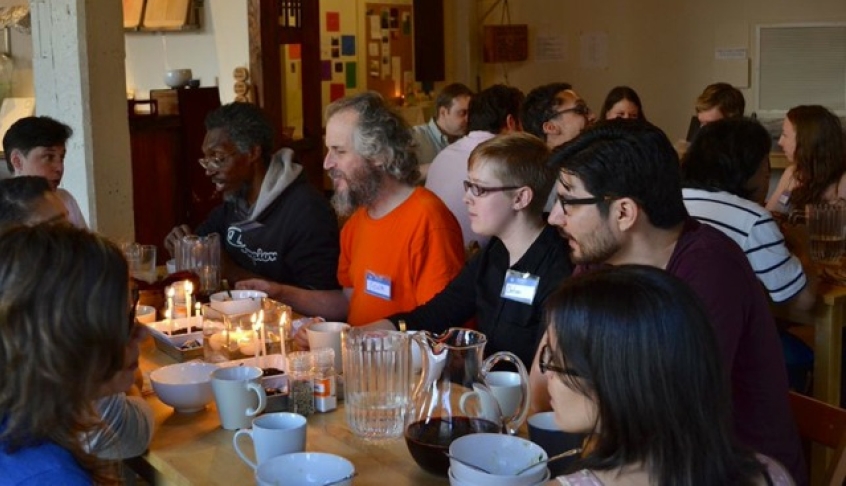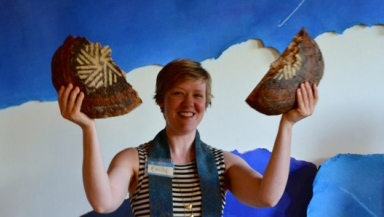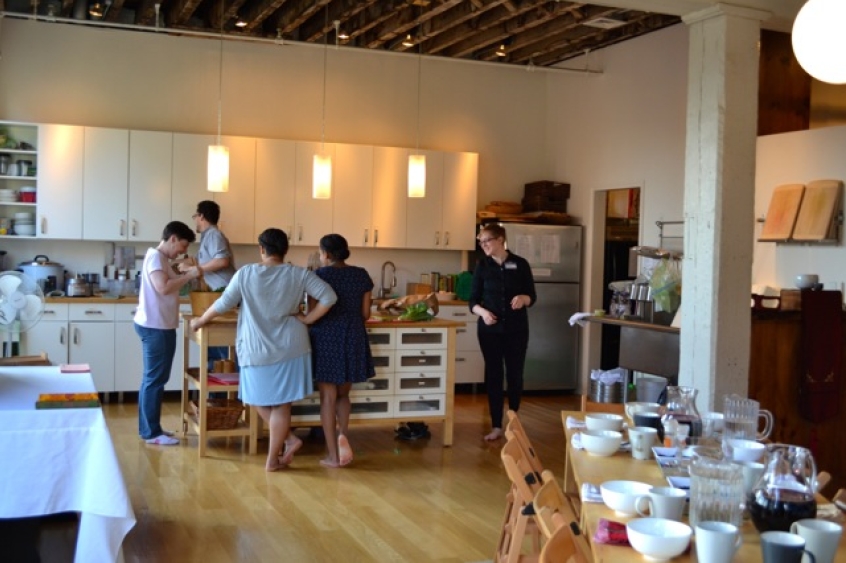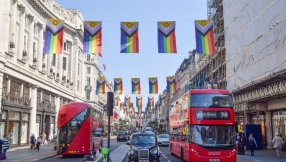
Megachurches are taking over America – with some churches boasting tens of thousands of regular congregants.
But what about the small, intimate communities that are also experiencing real revival? Not growing by hundreds per week, or receiving millions in tithing, but providing a space for real, raw relationships to develop across the myriad boundaries that so often separate us outside the Church?
St Lydia's in Brooklyn, New York, is one such community. Led by Rev Emily Scott, who moved to the city seven years ago, it is a 'Dinner church' – their gatherings revolve around sharing a meal and enjoying one another's company. It's a form of worship, Emily says.
"Dinner church is a very old idea, it's not anything new. Some traditions have picked it up and adopted the old liturgy, but to have it as the essential act of worship in a community is a different thing we're doing," she tells Christian Today.
"A few others have also picked it up and are experimenting which is exciting to see, but it's patterned after what it looked like in the early centuries of the Church. It's very old and traditional in a lot of ways, it's not a new idea, and one of the most important things around it is that something wonderful happens when people share a meal. It's a very human thing, and transcends a lot of differences."

A typical evening at St Lydia's sees everyone join in with the preparation of the meal – the 25 or so people who turn up are given tasks like chopping the veg or setting the table – "a central piece of the worship experience". Emily explains that this is entirely deliberate, as it allows everyone to be "quickly engaged in community".
"You can't avoid meeting people at St Lydia's!" she laughs. "You have multiple interactions with multiple people throughout the evening – you don't just meet the person you sit next to at dinner."
Once the meal is ready, the group sings together, candles are lit, there's the breaking and sharing of bread and then they all sit down to dinner. The rest of the evening includes readings from scripture, a sermon led by Emily and prayer, before everyone is tasked with clearing up.
Though it might seem unusual to have such an intimate gathering in a city like New York, that's exactly why Emily believes it's working so well – the intimacy takes on a much higher significance when it's absent beyond the walls of the church.
"A lot of churches in New York tend to be formal, with big, giant stone buildings, and it's sometimes hard to find a place in that context. So I started to think what it would look like for people looking for spirituality to have a space that felt wide open, while being very deeply rooted in terms of exploring faith and Christianity in particular," she says.
"We can create community in different ways and connect with the divine in different ways, and sometimes I like to go to those big churches – it's nice to be a little anonymous sometimes! But part of the context of St Lydia's is that New York is a city with a lot of people in it, it's really big.
"Lots of people move here not knowing many folks, and so going to a big church can make them feel even more isolated than when they arrive, so I thought what else can we add to the landscape of real experience in New York. I wanted to create deep community – to be known by name is really needed."
When you arrive at St Lydia's you're presented with a nametag – it's just one way the team want to encourage a united and familiar atmosphere.
Emily is adamant that a good welcome is vital in a church setting. "A huge part of our liturgy is constructed for people who are there for the first time, and we work really hard not to use language like: 'We welcome you to St Lydia's', because that implies that there's a 'we' and you're not in it!" she notes.
"It's tiny things like that which are so easy to fall into, because you do feel like there's a 'we' when you've been meeting for a long time, but we try to constantly wipe things out of our practices that create a divide between 'us' and 'you'.
"For example, we give everybody instructions every week that are directed to those who are there for the first time. We encourage people not to say things like 'I think we know by now...' because if you don't know then you don't feel part of it. That's what I want to model with our congregation - building the capacity to reach out to newcomers. One congregant said something really touching to me the other day; she said she found it easy to invite people because she knew someone would talk to her friends other than her! To which I said 'Great, it's working!'"

It is this reaching out that Emily says is at the heart of St Lydia's. "My biggest goal, as we grow and continue to age, is that the more grounded we are, the wider we'll be able to welcome," she says.
"It's hard work to reach out to those who we're not sure how to talk to – it takes risk to do that – but part of equipping the saints is building capacity and teaching people how to do that. We need to allow people to have that experience of meeting with a strange group of people – an eclectic mix is an interesting thing!"
Some of Emily's congregants are homeless, or have been, others are students, some have young families and one has just retired. She's also keen to welcome those who aren't sure they believe in God into the church – it's something she refers to as 'practice before belief'.
"Sometimes people say to me 'I'd love to come to St Lydia's sometime, but I don't know what I believe. Is that okay?' and I always think, 'Yeah! Great! Most of us don't!'. We're just trying to put it out there that you don't need to have what you believe written in stone and sorted out – just coming and showing up is part of the process of moving towards belief," she says.
"It's a lifelong path, and St Lydia's isn't a space where you arrive and it's expected that you have it all figured out. It seems like the process is dynamic, and it's formed and created in the context of worship – when we arrive part of what we're doing is honing in on who we think God is and what God is doing."
Though the congregation is small – partly for practical reasons, St Lydia currently meets in a space just 1000 square feet though it is moving next month to a slightly bigger and more flexible location – Emily insists that she sees "God moving all the time".
"Especially in relationships that are found in unexpected places – that's the most important place for me," she adds.
"I feel like in New York we're all living on top of one another, but we're divided very often. It's my greatest yearning to reach out across that divide and build relationships with people I pass on the street, but there's often no opportunity to connect with them. So even when it happens on a small scale, two people in our congregation meeting and connecting, it's the most marvellous thing."
She continues: "The other piece of it is that we tell stories. There's something very universal about telling a story and sharing an experience – when someone offers a snapshot of what's happening in their lives, I see so much of God in that."













